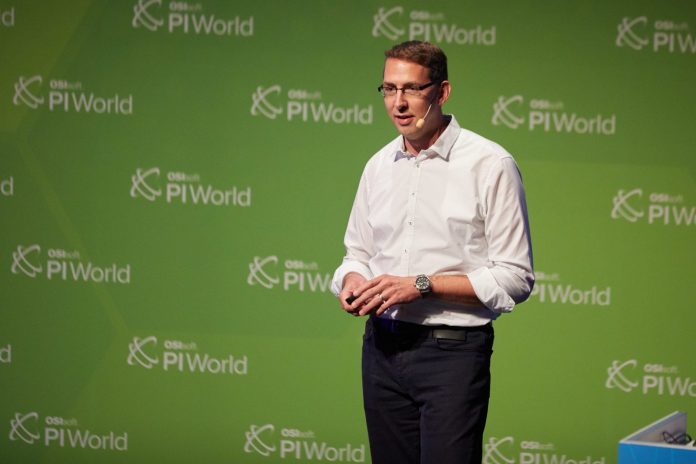Digital transformation, set in motion by industrial IoT, is an abstract exercise. It is not an off-the-shelf kind of a sale. It requires all parties to collaborate to affect change and reinvention, capturing business culture and business practice.
Importantly, it also needs to consider the algorithmic minutiae of multiple enterprise functions, and as they impact the forwards/backwards supply chain. “Yeah right. You may get a spot solution from one of the IoT cloud providers, but it’s only for one particular part of the equipment, and that’s not how any manufacturing line works.” says Viral Chawda, principal for innovation and enterprise solutions at KPMG.
“To get a meaningful outcome, you have to join it across multiple different systems – to make any sort of business decisions. And that’s not available as a pre-packaged solution.”
Is that a symptom of the fact that the market is still in its infancy, or that every customer is different? Chawda think it is the latter, as if the multiplicity of industrial process will make digital systems integration and digital solution design new every time.
“It’s not just that every customer is different. But every sub-process is different. There are multiple vendors making up the manufacturing line. You could have 10 different pieces of equipment manufactured by 10 different companies, with 10 different cloud providers capturing the data from them. That won’t change. It’s the same old ERP-bingo vendor analogy.”
At the same time, transforming production is not that hard. It just takes planning and patience. The first step, just to gain visibility of production data, can bring considerable rewards.
Swiss biotechnology firm Lonza – with 112 and 15,000 staff in Europe, North America and South Asia – is just discovering this. Since 2017, its Lonza Speciality Ingredients (LSI) division, which makes everything from anti-dandruff shampoos to corrosive coatings, has sought to make production data from its factories available in its central data science hub in Visp, in Switzerland.
LSI reviewed its manufacturing facilities at the time, evaluating each on a traffic-light system for its handling of data: most sites were red-lit for using paper; a handful had turned amber for recording process data in ‘historian’ time-series databases; just two were using formal data engines and dashboards. None were making advanced data analytics.
The LSI network is equipped with 150,000 sensors, providing control of its production processes. The first step was just to get the data from its myriad range of sensors and systems into a single system, says Tobias Merz (pictured), global operational technology manager at Lonza.
“We have a huge variety of systems at local level. The first stage is to connect to the system, and the second is to visualise the data in there. It’s hardly complex analytics,” he says, speaking at the European leg of OSIsoft’s annual PI World get-together in Gothenburg earlier this month, in Sweden.
LSI has deployed a unified data management system based OSIsoft’s PI infrastructure. PI is well established among industrialists as a repository for operational data, and a base-line platform to unite multiple data sources.
The company has also engaged Microsoft for cloud storage and IoT tools, and Seattle-based industrial IoT and AI provider Seeq (alongside, at the PI World address), which targets ‘data-rich information-poor’ enterprises in process manufacturing, to provide the dashboard skin on top, and the AI tools that go with it.
It will only move to modelling and executing analytics for process control after completing these initial tasks, says Merz. “We want to concentrate our activities and resources only on these first stages, to provide the infrastructure to enable operational staff to make more sense of the data. We are building individual solutions for single plants.”
The work will not be rushed, and production staff will be engaged at every step. “It’s a vision, for now,” he says of the company’s master-plan, to go to more ambitious AI-enabled production. But its first move to unite its global production data has been “overwhelming,” says Merz.
So far, LSI has 400 users in 10 facilities on the Seeq system, drawing on the PI engine. Around 150 processes are being monitored and optimised (he mentions “cooling channels” and “PH conductivity”) through the Seeq dashboard.
Merz has a fag-packet calculation that staff are saving 15,000 hours per year with Seeq’s data visualisation dashboards, compared with the time they would spend each morning “to discover the same information”, principally about their factory’s night-time operations. More than this, the system has changed the way the business pulls together.
“It’s not just production; it’s really going into different departments… It’s a decision making tool, a finding-together solution. Because [production staff] open the Seeq display in the morning, and discuss directly [about] the data,” he says.
“They don’t have to go back to the original distributed control system, and then make copies. Everyone is talking the same language… The system is changing the way we look at the data, and how we discuss problems [in production].”
Where does this leave us? Well, the industrial set is using AI to fantastic effect on the production line. But such examples remain outliers, and they tend to function – however well – in isolation. More transformative gains can be achieved by implementing simpler – often, non-AI – analytics solutions on a grander scale, inside of factory networks, and across supply chains.
The narrative tells it: the lesson from the auto-plant is the digital magic works; the lesson from Lonza is industrial change should not be rushed. Be deliberate; organise your data. The lesson from Sandvik is people will write the future, and order the AI. Importantly, the lesson from everyone is that innovation must be collaborative, and combine digital and domain expertise – it cannot happen behind curtains.
Which is a story for another day.
This article is taken from a new report from Enterprise IoT Insights, called ‘AI on the line — how advanced analytics and artificial intelligence are transforming the production line’. The report is available to download for free, here.

